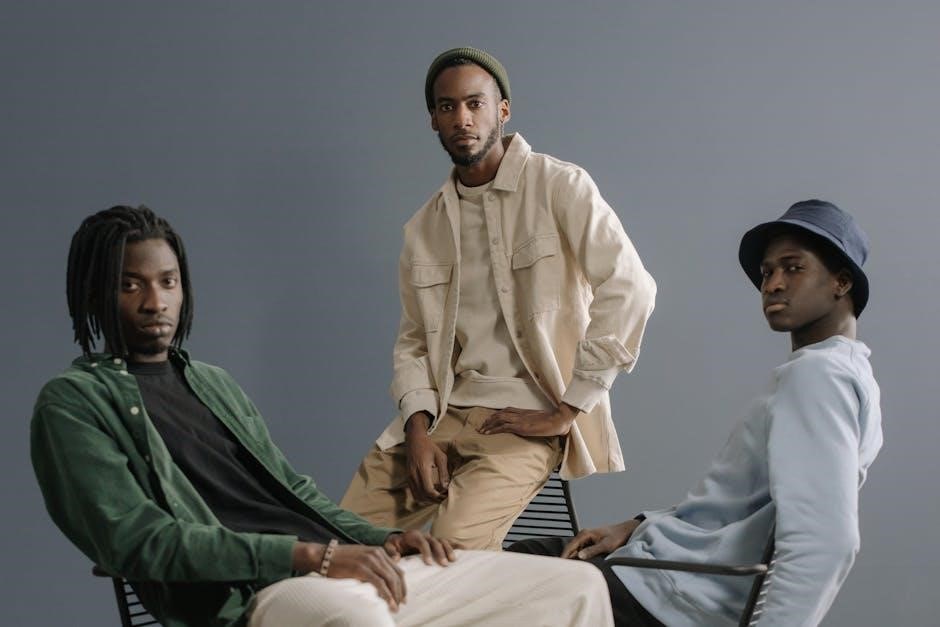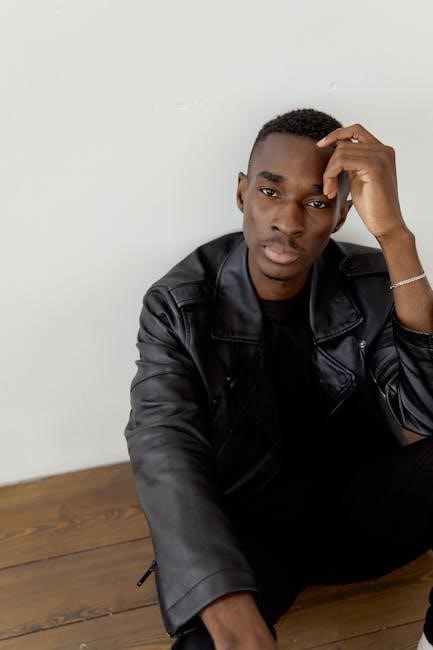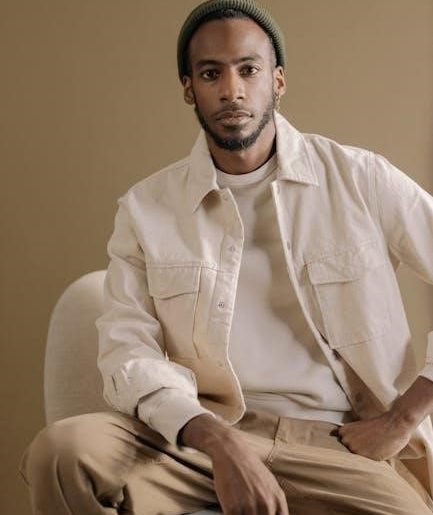A fashion lookbook is a curated visual guide showcasing a brand’s collection, designed to inspire and influence style choices. It serves as a cornerstone in fashion marketing, reflecting brand identity and creativity, while catering to diverse audiences seeking trend insights and aesthetic inspiration.
Definition and Purpose of a Fashion Lookbook
A fashion lookbook is a visual guide that showcases a brand’s or designer’s collection, highlighting key pieces and styling ideas. It serves as a powerful tool for fashion marketing, helping brands communicate their aesthetic and vision to customers. The purpose of a lookbook is to inspire and influence purchasing decisions by presenting garments in a lifestyle context; It also helps consumers visualize how pieces can be worn and mixed-and-matched. For designers, a lookbook is an opportunity to tell a story through their designs, emphasizing creativity and brand identity. Additionally, it acts as a catalog for retailers and buyers, providing a cohesive overview of the collection. Ultimately, a lookbook bridges the gap between creativity and commerce, making it an essential asset in the fashion industry.
Importance of a Lookbook in Fashion Marketing
A lookbook is a vital component in fashion marketing, offering a dynamic way to present collections and connect with target audiences. It serves as a visual narrative, capturing the essence of a brand’s aesthetic and creative direction. By showcasing garments in a lifestyle context, lookbooks help consumers envision how pieces fit into their wardrobes, fostering engagement and desire. For marketers, lookbooks are versatile tools that can be distributed across various platforms, from digital formats to print, ensuring wide reach and impact. They also provide a platform for storytelling, allowing brands to convey their values and unique selling points. Additionally, lookbooks are instrumental in building brand loyalty, as they offer a consistent and polished representation of the label. Overall, a well-crafted lookbook enhances brand visibility, drives customer interest, and supports sales strategies, making it indispensable in modern fashion marketing.

Structure of a Fashion Lookbook
A fashion lookbook typically includes introductory pages, core collection showcases, and closing sections. It is designed to engage audiences and communicate the brand’s vision effectively through a logical flow of content.
Key Sections of a Lookbook
A lookbook typically begins with a title page, introducing the brand and collection. Following this, a table of contents outlines the structure, ensuring easy navigation. The core section showcases high-quality images of outfits, highlighting key pieces and styling ideas. Each spread often includes detailed product descriptions, providing fabric information, sizing, and pricing. Accessories and footwear are also spotlighted to complement the apparel, creating a cohesive look. Additionally, mood boards or inspiration pages are incorporated to convey the collection’s theme and aesthetic. Customer testimonials or styling tips may be added to enhance engagement. Finally, the lookbook concludes with contact information and a call-to-action, guiding readers to purchase or learn more. These sections collectively create a comprehensive and visually appealing presentation that aligns with the brand’s identity and resonates with its target audience.
How to Organize a Lookbook for Maximum Impact
Organizing a lookbook effectively is crucial for capturing attention and conveying the brand’s vision. Begin with a strong cover page that reflects the collection’s theme. Inside, include a table of contents for easy navigation. Group outfits by themes, seasons, or collections to create a cohesive flow. Start with statement pieces or best-sellers to draw interest, then transition to complementary items. Use high-quality images that showcase styling details, and consider adding lifestyle shots to illustrate how the clothing can be worn. Incorporate detailed product descriptions, including fabrics, sizes, and prices, to inform and engage readers. Finally, conclude with a section highlighting styling tips or trends, encouraging readers to visualize the looks in their own wardrobes. This structured approach ensures the lookbook is both visually appealing and functional, driving customer interest and sales.

Design Elements of a Fashion Lookbook
A fashion lookbook’s design combines visual appeal with functional layout, incorporating high-quality imagery, cohesive color schemes, and clear typography. It balances creativity with brand identity, ensuring a polished and engaging presentation.
Visual Composition and Layout
Visual composition and layout are critical in a fashion lookbook, as they dictate how the audience engages with the content. A well-designed layout ensures that the brand’s aesthetic is cohesive and visually appealing. High-quality images should be balanced with white space to avoid clutter, while typography should be clean and legible. The arrangement of outfits and accessories must tell a story, guiding the viewer through the collection seamlessly. Symmetry, asymmetry, and the rule of thirds are common techniques used to create dynamic yet harmonious spreads. Color coordination between images and backgrounds enhances the overall visual flow, making the lookbook both professional and engaging. Proper alignment and spacing ensure that each element, from clothing to text, is showcased to its fullest potential. Ultimately, the layout should reflect the brand’s identity while captivating the audience’s attention and inspiring their imagination.
Role of Photography and Styling

Photography and styling are paramount in a fashion lookbook, as they bring the brand’s vision to life. High-quality images capture the essence of the collection, while styling ensures that each outfit is presented in its most flattering light. The photographer’s ability to manipulate lighting, angles, and composition is crucial for creating visually stunning and cohesive shots. Stylists, on the other hand, focus on selecting and arranging clothing, accessories, and props to convey the desired aesthetic and narrative. Together, they collaborate to highlight the unique features of each piece, ensuring that the lookbook resonates with the target audience. The interplay between photography and styling not only enhances the appeal of the collection but also reinforces the brand’s identity. Their combined efforts result in a lookbook that is both artistic and commercially viable, making it an indispensable tool in fashion marketing and storytelling. This synergy is what sets exceptional lookbooks apart from the ordinary.
Creating a Digital Lookbook in PDF Format
A digital lookbook in PDF format is a sleek, shareable asset that showcases collections professionally. Design tools like Adobe InDesign and Canva enable creation, ensuring high-resolution images and consistent branding for a polished, mobile-friendly presentation.
Tools and Software for Designing a Lookbook
Best Practices for a Professional Lookbook
Creating a professional lookbook involves several key strategies to ensure its effectiveness. First, define a clear concept and theme that aligns with your brand identity. This helps maintain consistency across all pages. High-quality visuals are essential, so invest in professional photography and styling. Use a cohesive color palette and typography to enhance the aesthetic appeal. Organize the content logically, starting with your strongest pieces and telling a story through the collection. Include detailed product information, such as fabric types and sizing, to inform consumers. Ensure the lookbook is mobile-friendly for seamless digital viewing. Regularly update the content to reflect current trends and seasons. Finally, distribute the lookbook across multiple platforms to maximize reach. By adhering to these practices, you can create a lookbook that not only showcases your designs but also resonates with your target audience and drives engagement.
